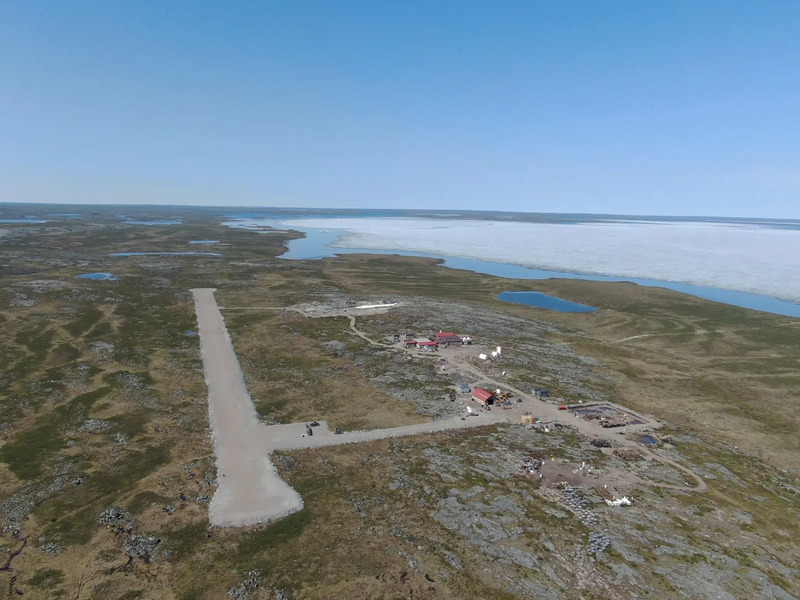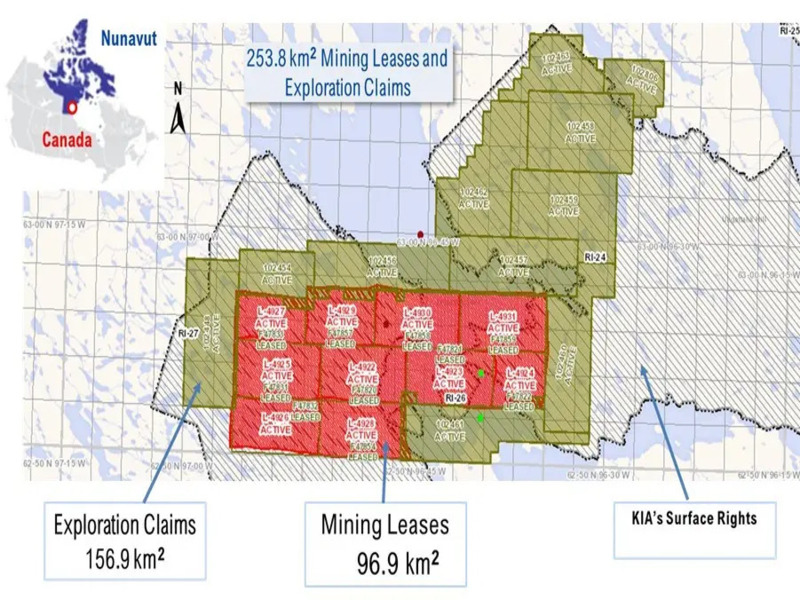The Ferguson Lake property is a mining project being developed in the territory of Nunavut, Canada. The project hosts base metals (nickel, copper, cobalt) and platinum-group metals (mainly palladium and platinum), as well as potentially lithium minerals.
Canadian North Resources is the 100% owner of the project.
The company filed the updated mineral resource estimate of the Ferguson Lake Project in July 2022. The results showed that the property hosts substantial resources in compliance with NI43-101 standards as well as significant potential for resource expansion.
In 2023, Canadian North Resources plans a 20,000m drill programme based on the results of the drilling program completed in the previous year.
Project Gallery
-

The site of the Ferguson Lake Project in Canada. (Credit: Canadian North Resources Inc.)
-

The Mining Claims and Leases of the project. (Credit: Canadian North Resources Inc.)
-

The project hosts base metals (nickel, copper, cobalt) and platinum-group metals (mainly palladium and platinum). (Credit: Canadian North Resources Inc.)
Ferguson Lake Project site details
The project is located in the Kivalliq region of southern Nunavut, around 250km west of Rankin Inlet and 170km south-southwest of Baker Lake.
The property lies between Yathkyed and Qamanirjuaq lakes and stretches approximately 16.5km in the east-west direction and 5.5km in the north-south.
It consists of ten contiguous mining leases covering an area of 23,935 acres (9,686ha).
History
In 1950, the property was discovered by Canico, a predecessor exploration arm of Inco. From 1999 to 2013, it had been explored by different operators dominated by Starfield Resources.
Canadian North Resources purchased the property in 2013. The company conducted a sampling programme of historic drill core in 2013 and a more extensive resampling programme of historic drill core in 2021.
Canadian North also completed metallurgical testing between 2013 and 2016 to assess new approaches to processing. This increased Nickel (Ni), Copper (Cu) and cobalt (Co) recoveries to 94%, 99% and 91%, respectively, and in palladium (Pd) and platinum (Pt) recoveries of 77% and 50%, respectively.
Ferguson Lake Project geology and mineralisation
The Ferguson Lake Project is situated in the Western Churchill Province and north western Hearne domain. It features primarily Archean metavolcanic and metasedimentary rocks with extensive gneissic terrains.
The property spreads across the Yathkyed Greenstone Belt.
The belt is strongly deformed with gneissic suite of Archean supracrustal and intrusive rocks as well as variably deformed Proterozoic dykes and plutons.
The Archean sequence includes oxide, sulphide, and silicate banded iron formations which are interlayered with quartz-feldspar-biotite (hornblende) gneiss.
The oldest rocks are fine to medium grained amphibolites found in the southern and north eastern parts of the property.
The mineralized zones of the property consist of magmatic Ni-Cu sulphides with Co and Platinum Group Metals.
Canadian North Resources said that three mineralised zones were identified- the East, Central and West Zones. The mineralisation, with a thickness between 10m and 600m, stretches discontinuously over a strike length of more than 12km.
Besides Ni-Cu sulphides, disseminated sulphides also exist between 20m and 200m below the massive horizon.
Mineral resource estimate
Ferguson Lake Project has indicated mineral resources of 24.3 million tonnes (Mt) with the NSR value of $257 per tonne, containing 455 million pounds (Mlb) Cu at 0.85%, 321Mlb Ni at 0.60%, 37.5Mlb Co at 0.07%, 1.08 million ounces (Moz) Pd at 1.38gpt and 0.18Moz Pt at 0.23gpt.
The total inferred mineral resources stand at 47.2Mt with the NSR value of $244 per tonne, containing 947Mlb Cu at 0.91%, 551.5Mlb Ni at 0.53%, 62.4Mlb Co at 0.06%, 2.12Moz Pd at 1.4gpt and 0.38Moz Pt at 0.25gpt.
The deposit does not contain measured resources.
The current mineral resource estimate is based exclusively on diamond drilling. The dataset includes 611 historic diamond drill holes and 186,416m of drilling 36,740 assay samples.
Mining and Ore processing
According to the technical report, Ferguson Lake can be mined by both open pit and underground mining methods.
The metallurgical testing conducted for Starfield from 2001 to 2008 created a predominantly hydrometallurgical flowsheet to assess the economic viability of the project at the scoping level.
According to the proposed process flowsheet, the run of mine (ROM) ore will be crushed and processed in the concentrator on-site and then will be transferred to hydrometallurgical processing facility located near Arviat.
The concentrated slurry will be dewatered and then filtered ahead of the processing.
The primary leaching of the sulphide ore with hydrochloric acid will generate a residue containing virtually the base metals.
This will be followed by a secondary leach of the solids with oxygen to dissolve the nickel, copper and cobalt. The sulphide sulphur will be converted into element sulphur.
From the secondary leach, the slurry will be filtered and processed to re-dissolve the goethite.
The resulting slurry will be filtered, and the washed filter cake will be transferred as a residue containing the precious metals.
Zinc will be removed through Ion Exchange, and copper and cobalt will be recovered using Anionic Solvent Extraction.
Nickel will be recovered by conventional sulphate anionic solvent extraction and electrowin to produce LME-grade metal.
Project infrastructure
The site is primarily accessible by air from Rankin Inlet, Nunavut, or Churchill, Manitoba. Satellite communications enable telephone, fax and high-speed internet connections in the remote area.
Water will be available from local lakes, while power is supplied by diesel generators.
Contractors involved
The independent technical report for the project, effective June 2022, was prepared by Ronacher Mckenzie Geoscience and Francis Minerals.
Roscoe Postle Associates completed the Preliminary Economic Assessment of the project on behalf of Starfield Resources in November 2011.
Metallurgical testing from 2001 to 2008 was conducted by Kingston Process Metallurgy, SGS Lakefield and NeoFerric.
